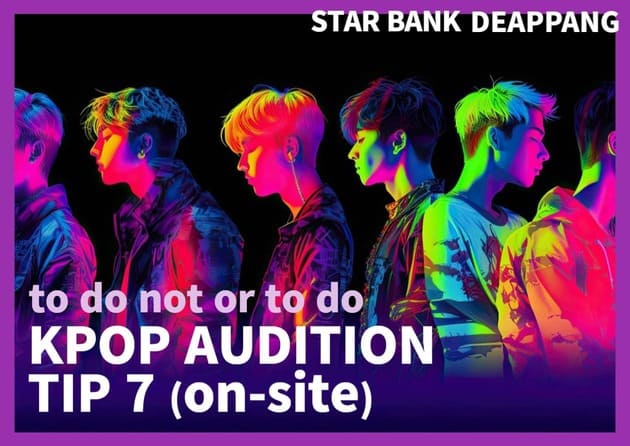[This article was written by interviewing various kpop dance academies and referring to their answers]
1. Let’s open the door and say hello to the interviewer first.
In auditions, applicants often go to their seats and say hello. Rather, it is better to say hello as soon as you open the door. Greetings announce that you are here and make yourself pay attention to others. Let them pay attention to themselves by informing the interviewer who may be talking about the previous applicant (or talking about something else).
There is a disadvantage in that the applicant goes to his or her seat and says hello at the audition. First, you may feel awkward in a little period of moving from the door to the seat. Also, during that time, the interviewers feel ignored.
2. Let’s not appeal to a failed career.
More precisely, they are advised to avoid saying that they passed the first round at other ENT. This was not ‘passed through the first round’ but ‘failed in the final’. Therefore, there is a perception that the interviewers are applicants who failed the final interview.
No matter how much failure is said to be the mother of success, it is not necessary to give the interviewers the image of someone who has experienced many failures.
K-pop audition has a very short interview time. You should pay more attention to showing your strengths – dancing, singing, rapping, etc. in a short time.
3. Let’s choose a choreography that can reveal ourselves as much as possible.
A person whose strength is dancing should choose a choreography that can reveal himself as much as possible. That’s so natural.
What I want to emphasize here is to avoid ‘choreography that starts from the floor or crawls on the floor’.
If you use the floor, the interviewer’s gaze will naturally go down. Among the types of camera angles, there is a high angle. It is a method of shooting from top to bottom when you want to express your frustration and loneliness. (Of course, it has the effect of looking cheerful when taking a selfie, but it is not discussed in audition situations.) Most of the emotions that humans feel when looking down are negative.
In addition, choreography using the floor usually blocks the view of the interviewers. In order to receive a more accurate evaluation, it is right to avoid such choreography.
I recommend choreography that allows you to stand upright and dance so that your dance lines can be revealed as much as possible.
4. “I’ll start dancing”
Let’s use a way of expressing confidence. Instead of saying, “Can I start dancing?” say, “Let’s start dancing.”
Using a way of speaking that can reveal your confidence is a good way to reveal your bright energy.
(Link: Bright Energy and Idol Auditions)
You should follow along and refute compliments or avoid expressing ‘I think it’s~’. Express gratitude to compliments.
In addition, you should be careful when using the expression ‘I think it’s’. ‘I think it’ is’ is an expression used when you are not sure. Therefore, it should not be used to talk about your thoughts and feelings.
5. “Thank you”
When the stage is over, let’s say hello to the people who paid attention to us.
Instead of saying “thank you,” which is a common mistake Koreans make here, they say “Thank you for your hard work” and “Thank you for your hard work.”
These two words are intended for people who are lower than themselves. A small slip of the tongue can lower your score.
6. Reading and expressiveness
I don’t want to tell you to read books, but reading is a really necessary part.
In auditions, you have to express yourself. The way to express yourself can be dancing, sometimes singing, or rapping. The most basic of these is dialogue. Therefore, it is important to develop your expressive power through reading.
What I want to say here is not to use difficult words fluently.
Sometimes there is something I want to say, but isn’t it expressed properly? Isn’t there a time when even if you tell others over and over again, it can’t be conveyed the way you thought? Think of it at an audition.
Books are written expressions of one’s thoughts, so when reading books, readers also become proficient in expressing their thoughts in writing or words.
7. Hair style
It is said that there is a hairstyle that interviewers prefer or dislike. First of all, female applicants like to have long hair. Interviewers sometimes ask female applicants to “try to put their hair down” and “try to the left.” They try to figure out what suits female applicants best.
And male applicants should avoid bowl cut hair. I’m not saying that bowl cut hair is bad. The problem is because it’s hard to pull it off. If it doesn’t look good on the head, it looks like a fool rather than cute. If you can’t manage it properly, you should avoidbowl cut hair.
